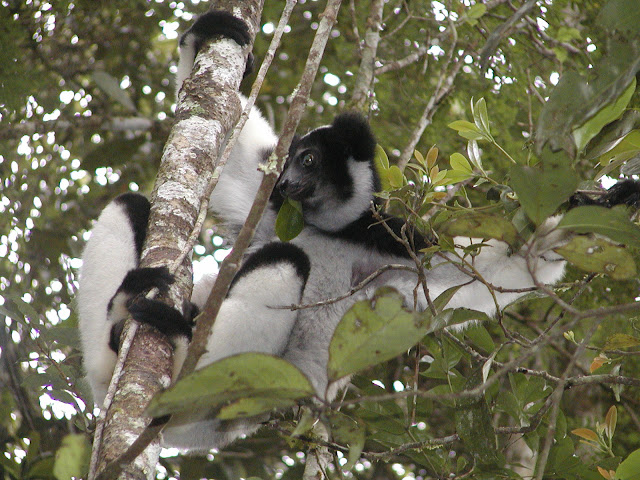The Life of Animals | Indri | In collaboration with the diadem Sifaka, Indri lemur is the largest still in existence. The Clinger and Indri is a vertical leaper and thus holds its body upright on a journey through the trees or branches of peace. Unlike any living lemur, the Indri has only a rudimentary tail. The silky fur is mostly black with white spots on the limbs, neck, crown, and lower back. Different populations of the species show large differences in color, with some populations of North consisting mainly or exclusively of black people. The face is pale with a black bare skin, and is sometimes trimmed with white fur.
Because of these color variations, Colin Groves listed two subspecies of Indri in 2005: the Indri Indri, the black part of its northern and relatively pale Indri indri variegatus in the southern part. Later editions of lemurs in Madagascar by Russell Mitter Meier et al. not to recognize this division, and recent work suggests that morphological and genetic variation in the Indri is clinal. The Indri practices long-term monogamy, seeking a new partner after the death of a partner. It lives in small groups, composed of male and female offspring mated and mature. In more fragmented forests of their range, the Indri live in large groups with several generations.
The Indri is sleeping in trees about 10-30 meters above the ground and used to sleeping alone or in pairs. It is a game for young indri common, sometimes grown women, too quiet, struggling somewhere between a few seconds to 15 minutes. Indri reach sexual maturity between the ages of 7-9. Females carry indri every two to three years, with a gestation period of 120-150 days
The Indri reaches sexual maturity between seven and nine years is a relatively slow speed, the indri known for its strong, distinctive songs, which can last from 45 seconds to 3 minutes more, well known. Song length and structure varies between and within groups, but most songs have the following three phases reason.
It is customary to coordinate this for two or more Indri, the time to get the notes to form a duo. Several groups used to sing one after the indri, react with each other. In addition to strengthening the contacts between groups, the songs can communicate and limits of territorial defense, environmental conditions, the reproductive potential of the group members, and warning signs The Indri after disturbances such as lightning , airplanes, birds and other calls of lemurs can sing.
Daily frequency of the song is at its peak during the breeding season of the indri from December to March. Several other Indri sounds were identified. The Indri emit a warning "cry" or "honk" on terrestrial predators such as the pit. To strengthen their song, the Indri to move up the tree before calling, which allows them to hear about 3-4 km wide.An Indri caught him and carried him to safety. Most legends establish a closer relationship between the Indri and humans. This brother was the first man and the brother who had remained in the forest, the first Indri. The Indri cries in mourning for his lost brother An explanation of the Babakoto name, is that the calls of the Indri was a father to his prodigal son demanded similar. When the son has also disappeared, the rest of the villagers ventured into the forest looking for two but he discovered that two large lemurs sitting in the trees: the first Indri. It is easy to see why the Indri is so closely identified with the people. Her long legs, body position upright large, the lack of a prominent tail, vocalizations and complex systems of communication are all reminiscent of human traits. Another feature of the Indri-human, as is its behavior in the sun. As his parents Sifaka, the Indri frequently engaged in what was for sunbathing or sun worship described.
Find The Life of Animals





